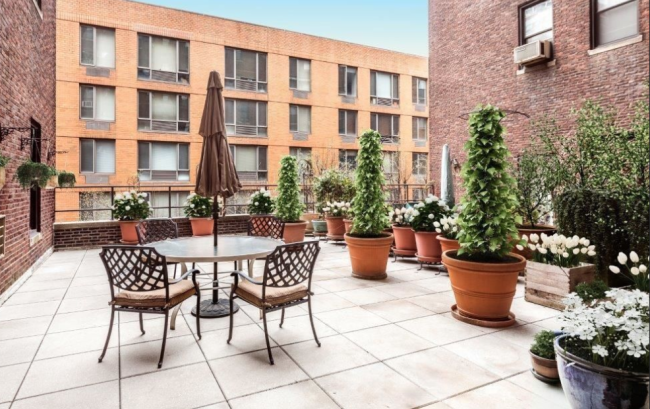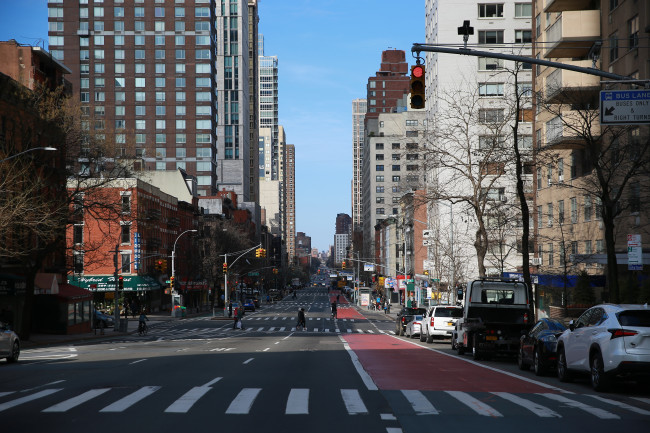With inventory down and contracts disrupted, Manhattan's spring sales season is on pause, too

Manhattan listing inventory fell quarter over quarter in the first quarter for the first time since 2007.
iStock
When New York State sounded the alarm about the conoravirus outbreak in mid-March, ordering schools and businesses closed, real estate sales in Manhattan ground to a near halt.
In Douglas Elliman’s Manhattan sales market report for the first quarter, author Jonathan Miller, president and CEO of appraisal firm Miller Samuel, notes that concerns about the global pandemic prompted the Federal Reserve to make two emergency interest rate cuts in the early part of the month. Soon after, New York put all non-essential businesses on “pause” to slow the spread of infection.
Manhattan sellers responded to the turmoil by pulling their listings: The report notes listing inventory fell quarter over quarter for the first time since 2007. And it’s a very strange time to see a drop in inventory. Normally, sellers would be ramping up for the spring selling season, Miller points out.
Editor's note: Click here for more of Brick Underground's coronavirus coverage.
Inventory is really the only reliable data point available right now, Miller says, since current sales contract activity does not reflect the impact of the coronavirus because of the inherent lag time involved in getting contracts signed.
“The market is pausing,” Miller says. He compared the situation to the Financial Crisis, when “30 to 40 percent of contracts were blown up. In a crisis, the probability of not closing is elevated. We don’t have a lot of empirical evidence that the market has pivoted, but we will.”
Miller expects to see significant disruption in contract activity reflected in the coming months.
“How deep and how long the market is impacted is determined by how long the virus will take to peak and wane. We just don’t know, but my new rule of thumb is the longer the outbreak, the more damage to the economy, and the more damage there will be to the housing market,” he says.
He says he thinks the impact will be more significant than what occurred after the Financial Crisis and after 9/11. “The short-term future is very grim,” he says.
Douglas Elliman’s first quarter market report otherwise paints a picture of what life looked like before the pandemic took hold.
The number of sales jumped year over year to 13.5 percent after two straight quarterly declines and NYC saw the largest year-over-year increase in new development closings in two and a half years, the report says. But pricing was soft and there were signs that sellers were nervous: All three overall price trend indicators declined annually for the third straight quarter and re-sale listing inventory fell year over year for the first time in 10 quarters
Other market reports
Frederick Warburg Peters, CEO of Warburg Realty says in the firm’s first quarter report, “In my 20 years of writing quarterly market reports, no quarter has ever resembled this one.” The market started strong and by the time the governor ordered New Yorkers to stay home, almost all real estate activity in Manhattan, Brooklyn, and Queens had already ceased, he says. “If past crises are any guide, prices will fall but demand will be strong when the crisis begins to lift and people feel safe going about their lives again,” Peters says.
Halstead’s first quarter market report also notes the Manhattan market showed signs of improvement. Buyers started to respond to low mortgage rates, more inventory, and sellers who were willing to negotiate, says Diane M. Ramirez, chairman and CEO. The pandemic has put real estate on pause for now, she says, “However, we anticipate a pent-up demand for real estate once the crisis eases and things return to normal.”
CORE released its first quarter Manhattan market report and first quarter Manhattan new development market report. “The quarter started off strong, while the coronavirus and ‘stay-at-home’ orders greatly impacted March, resulting in a temporary paralysis of activity,” says Garrett Derderian, managing director.
Brown Harris Stevens' first quarter report saw the average new development price fell sharply, mostly due to inflated numbers a year ago that included a record $240 million sale.
Compass' first quarter Manhattan market notes that New York City is the current epicenter of the outbreak, and the cancellation of open houses and showings took an inevitable toll on market activity in the last weeks of March. “If the anticipated trajectory of the virus holds, we’re at the beginning of this curtailed real estate activity,” says Rory Golod, regional president for New York.
You Might Also Like




























